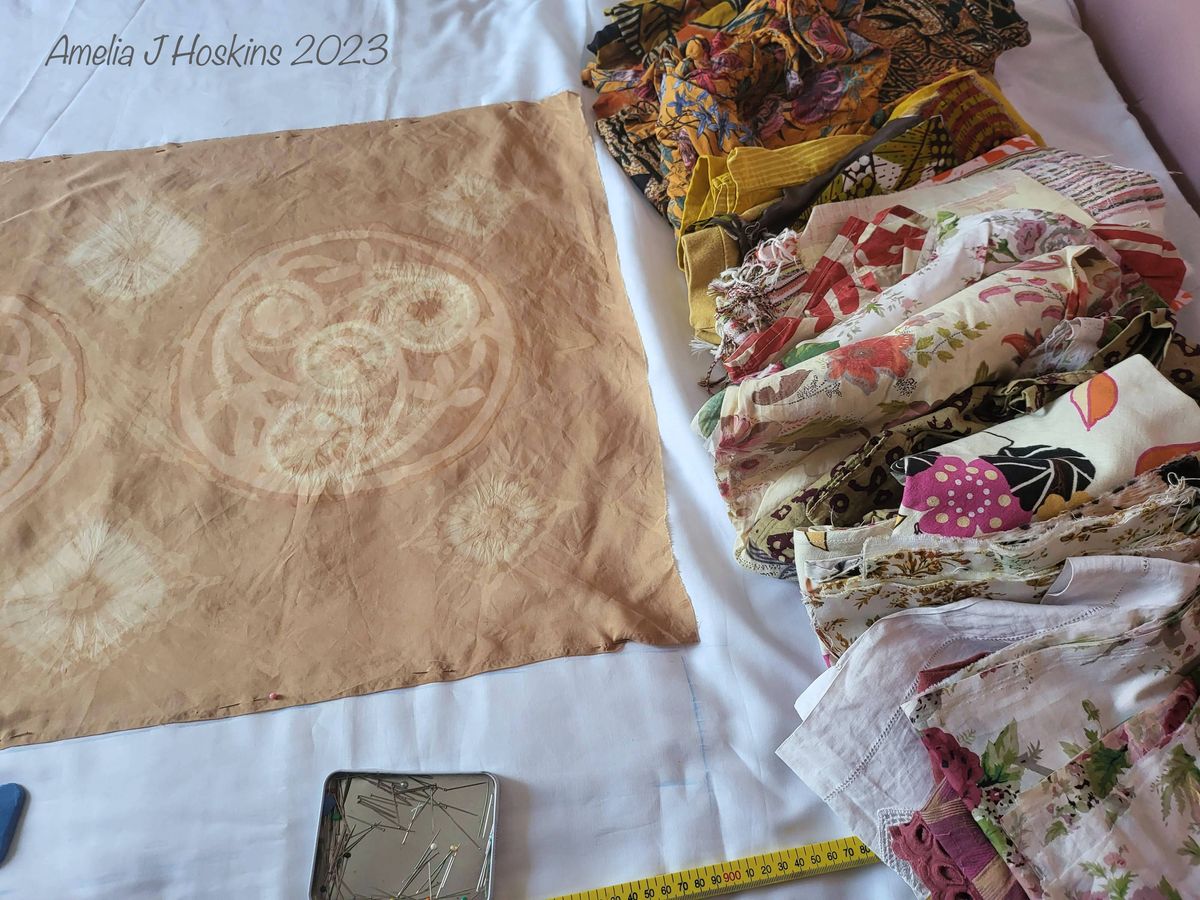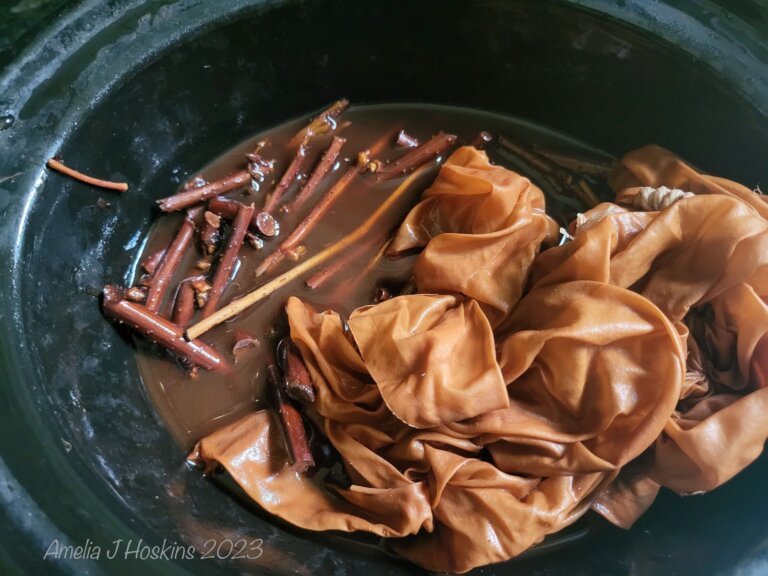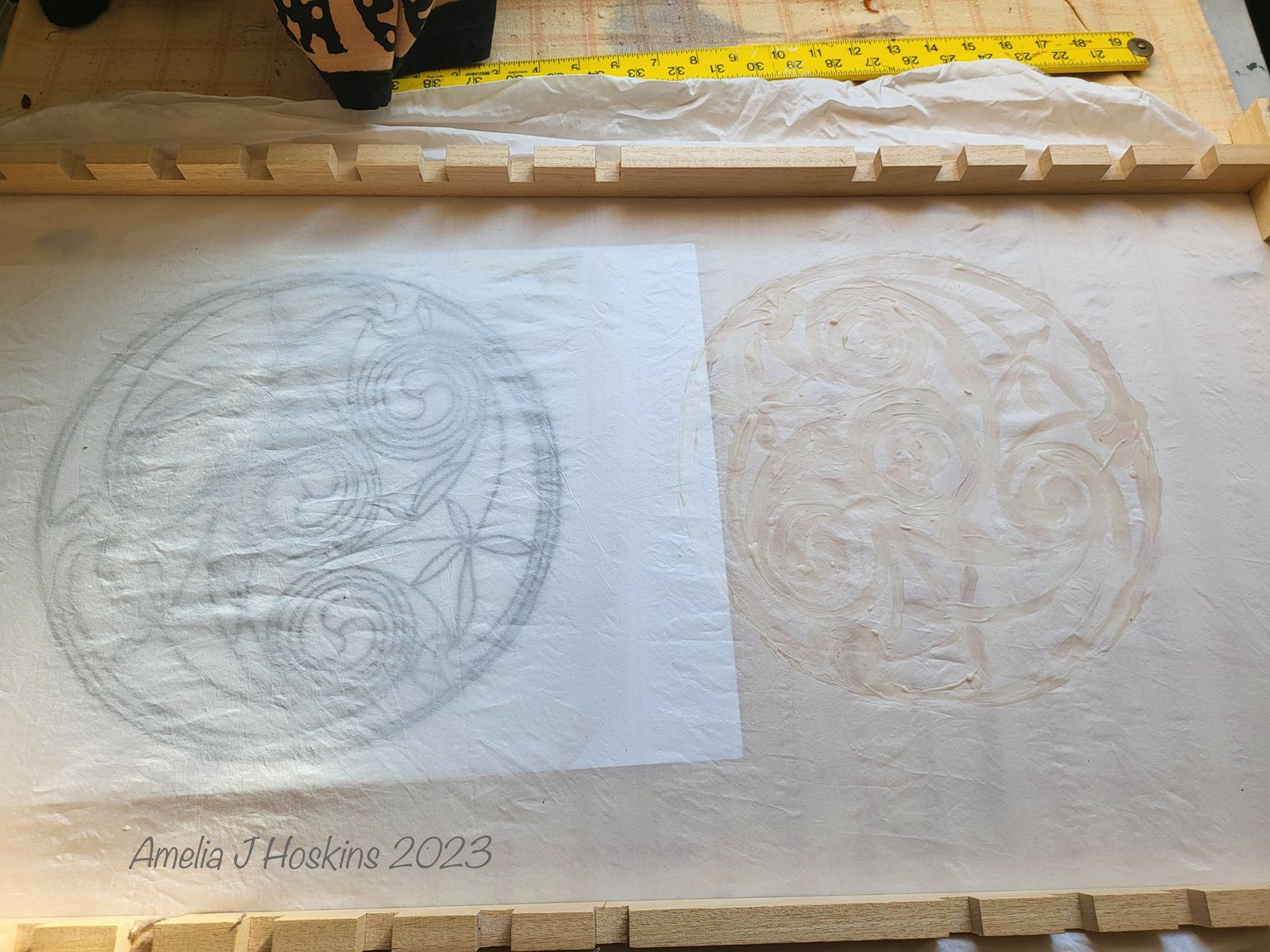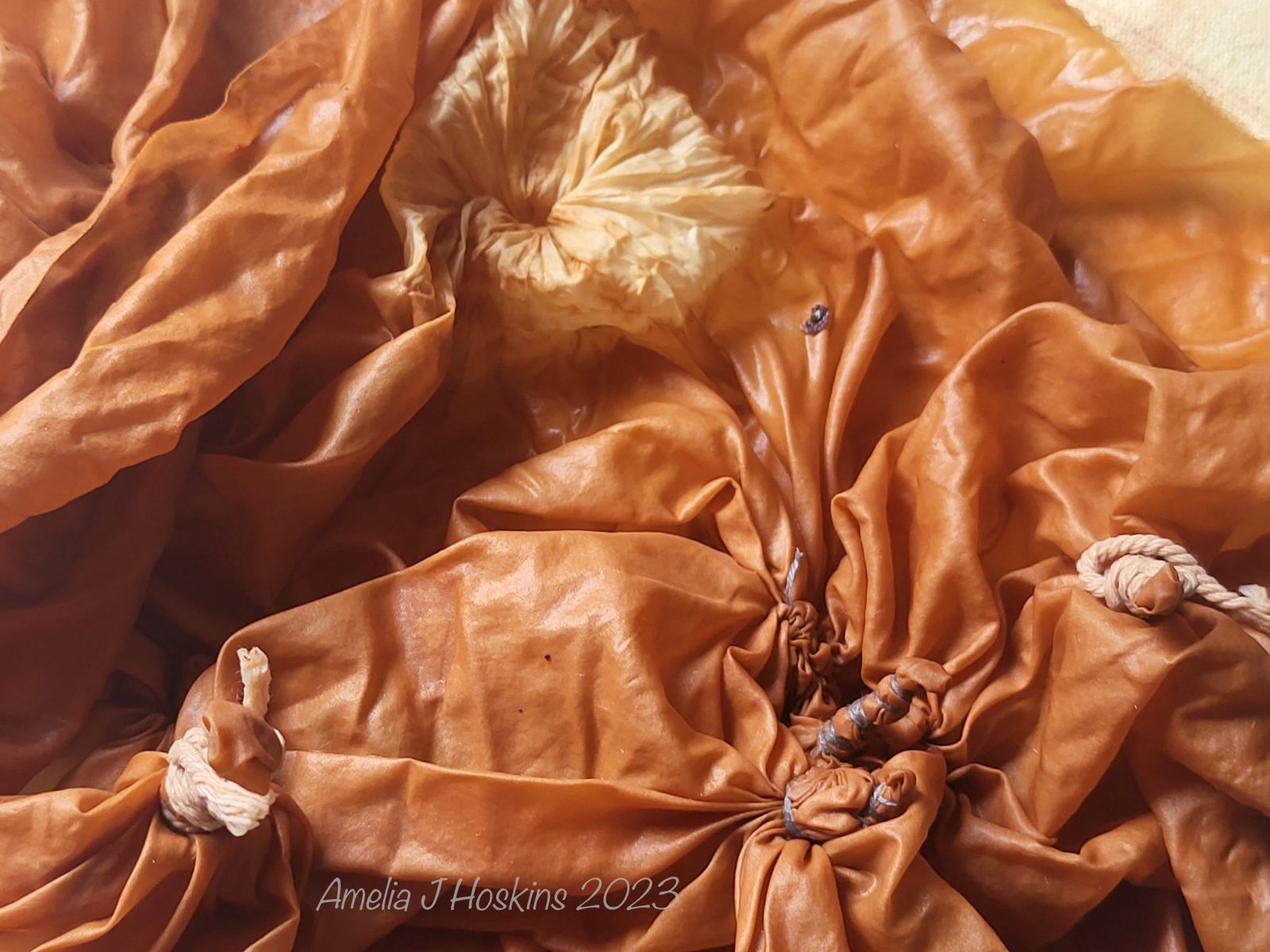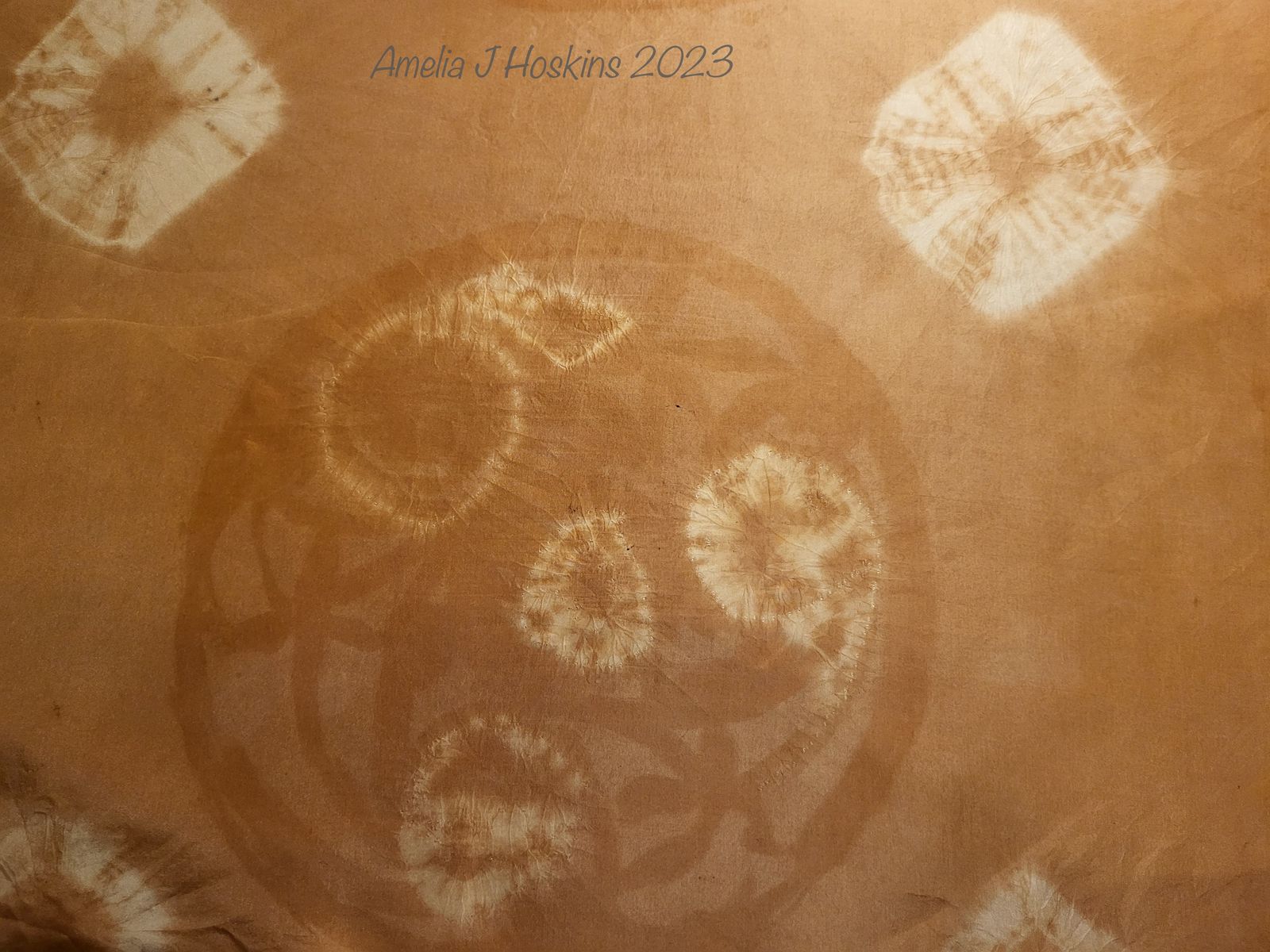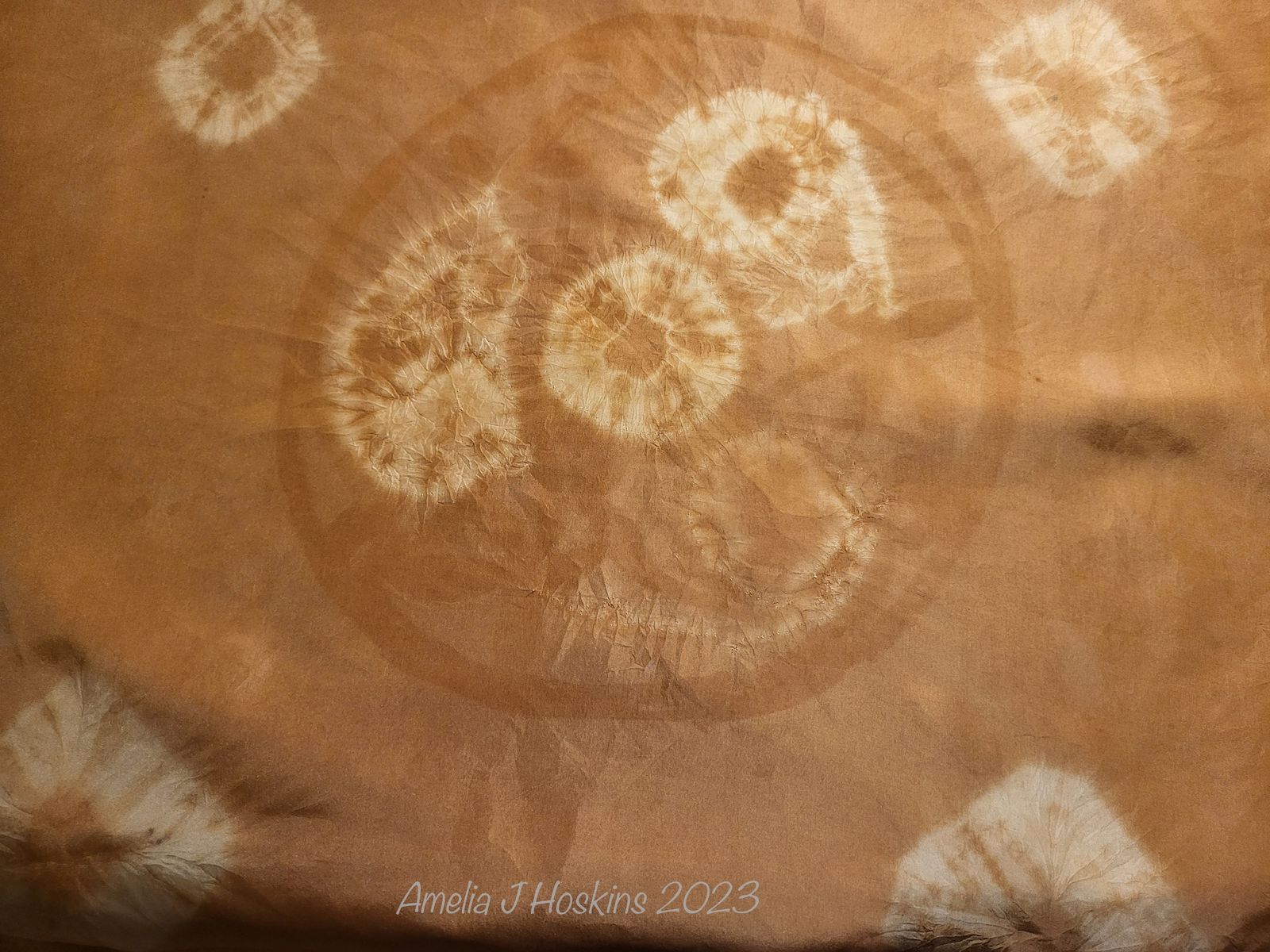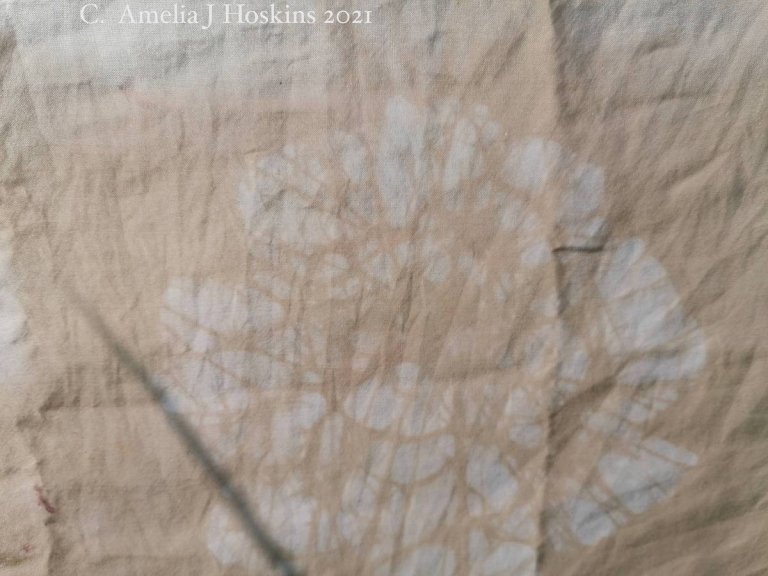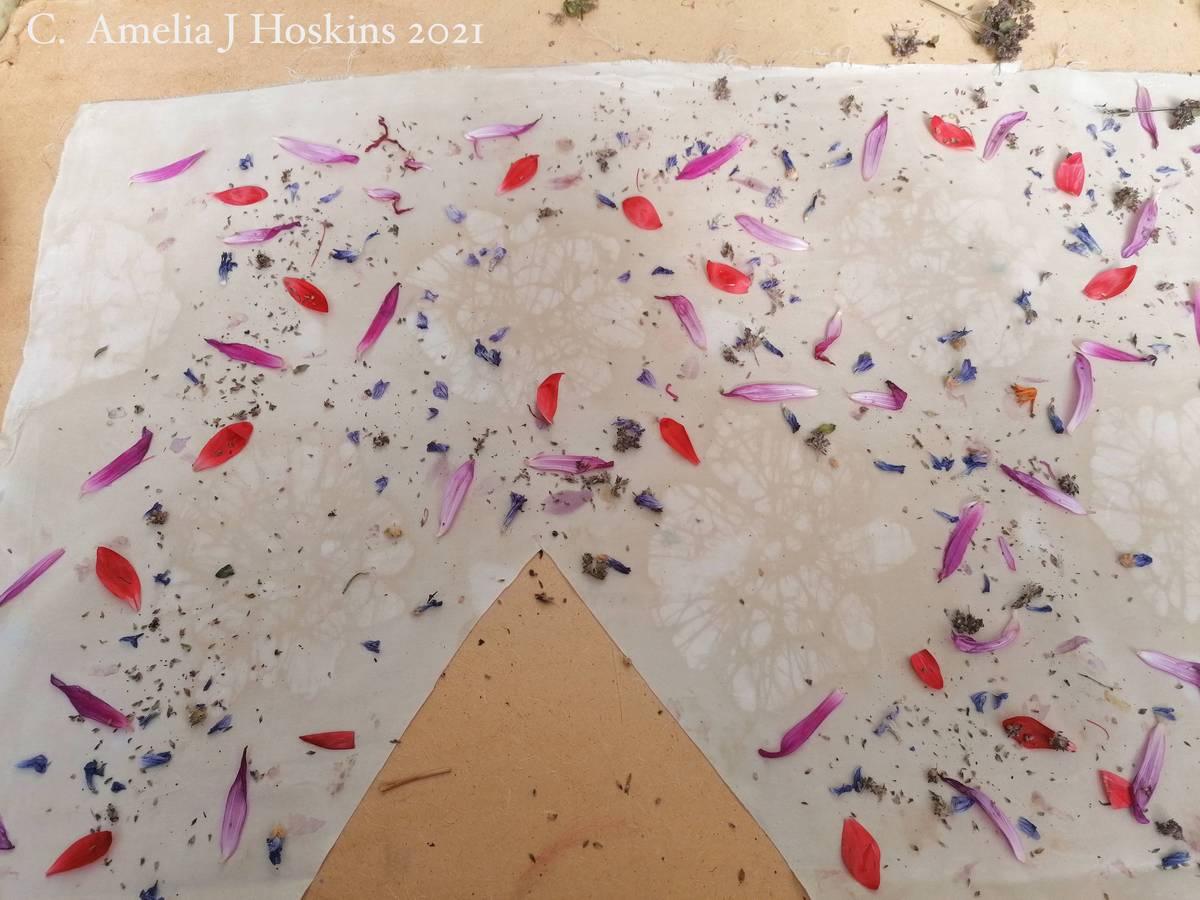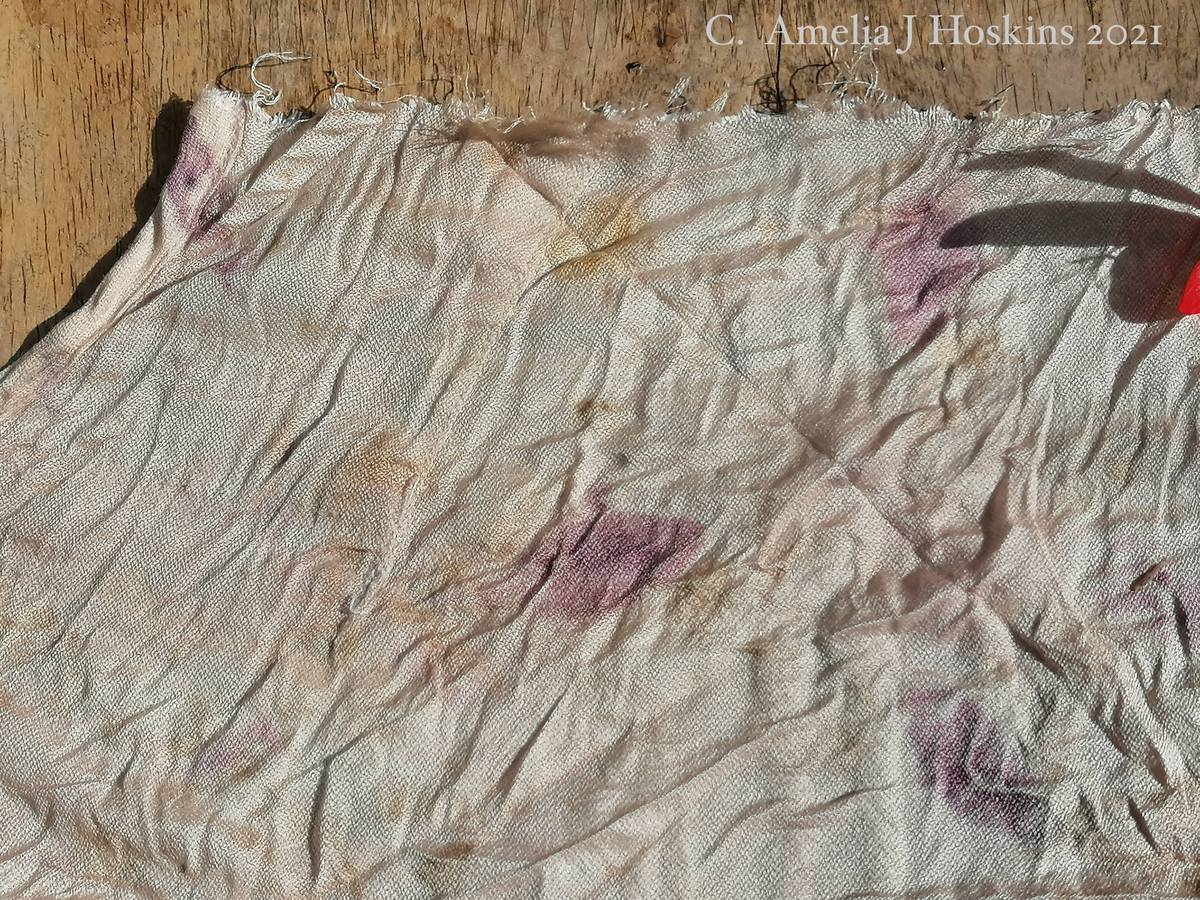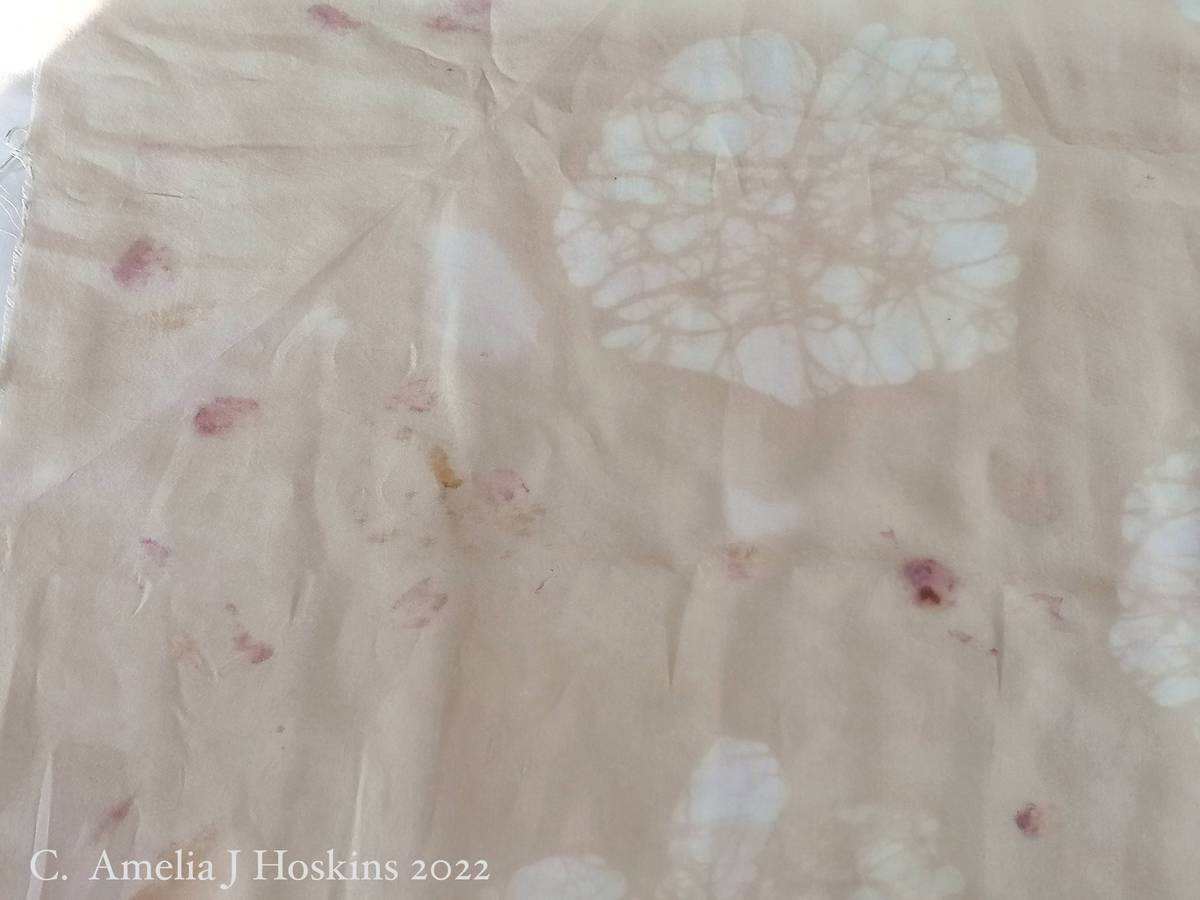Raspberry Cane Dyepot Resist
Silk dyed in pot of previous 'Indian Bean Tree' dye; with added chopped raspberry canes. Canes were heated in slow cooker for some time, and a test square of silk left in cold dye for 5 days, which turned ocre gold.
TRISKEL DESIGNS: Soya wax used to create resist areas of triskels, prior to dyeing in a previous dye bath which had resulted too pale. The two design areas traced through with brush of hot soya wax. The original wax imprint is seen in the final result below, after raspberry cane dyepot. Wax may have been too hot, as it left a dark mark; see lemon bleaching below. [Triskel design taken from Celtic Spirals book, enlarged]
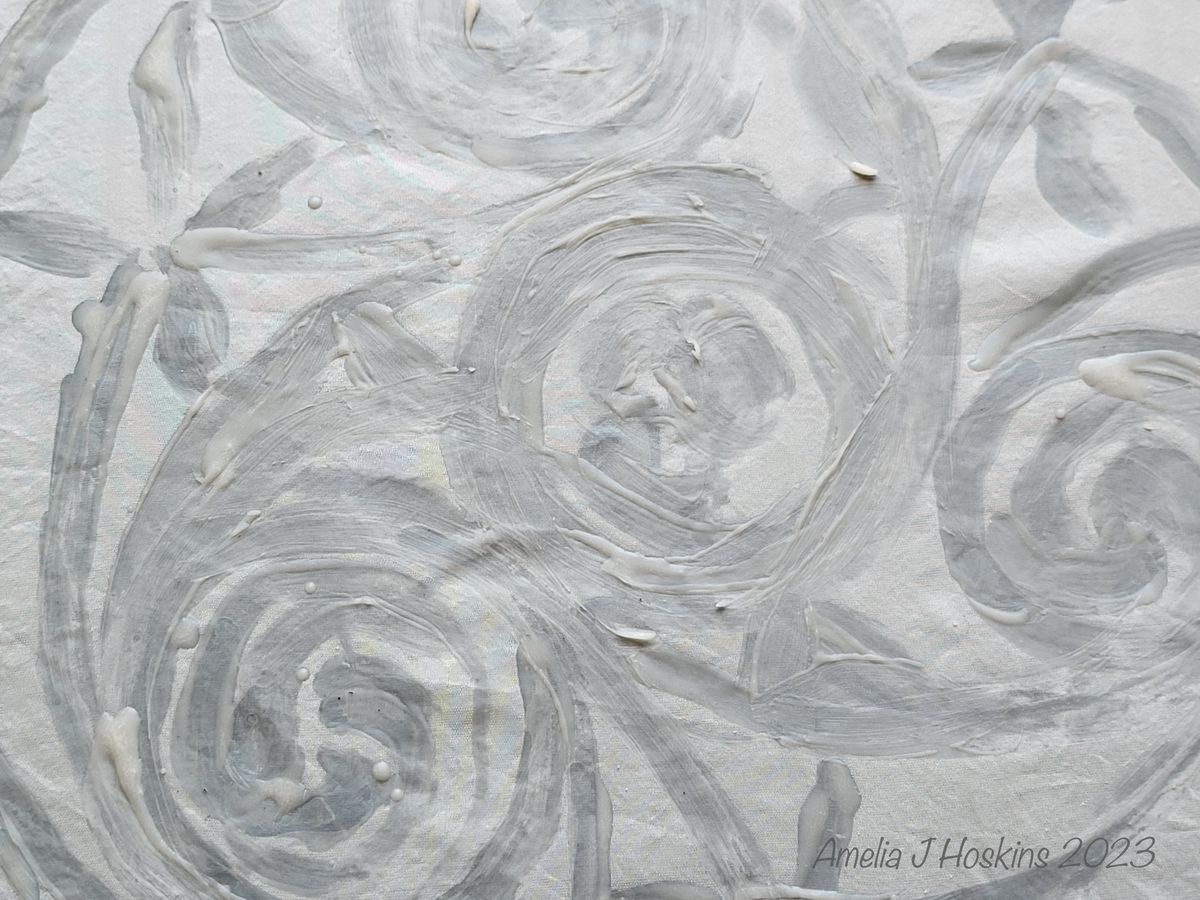
RASPBERRY CANE RESULT
DESIGN: Two large triskelles on cloth.
- Over-dying pale rosehip-dyed habotai silk. Finished colour mid tone terracotta.
- Circular areas of triskelle designs were stitched around and gathered up tight.
- Cold dyed for over 24hrs, the resist technique worked reasonably well, some circles clearly have the paler rosehip colour showing due to the blocking off of die penetration.
- The soya wax design outlines had left an imprint darker, whereas I wanted pale contrast, so I followed the design again with lemon juice.
Over-bleaching with Lemon Juice
Soya wax circular outlines (used as resist) had left a darker mark (grease?) or darker dyed? I used lemon juice to brush around the triskel design circles, which after drying and washing out, left a lighter outline, like a weak bleach. A good experiment, which may bleach better on different dye stuffs. The lemon itself was used as a 'bleach pot' with an end cut off to dip in.
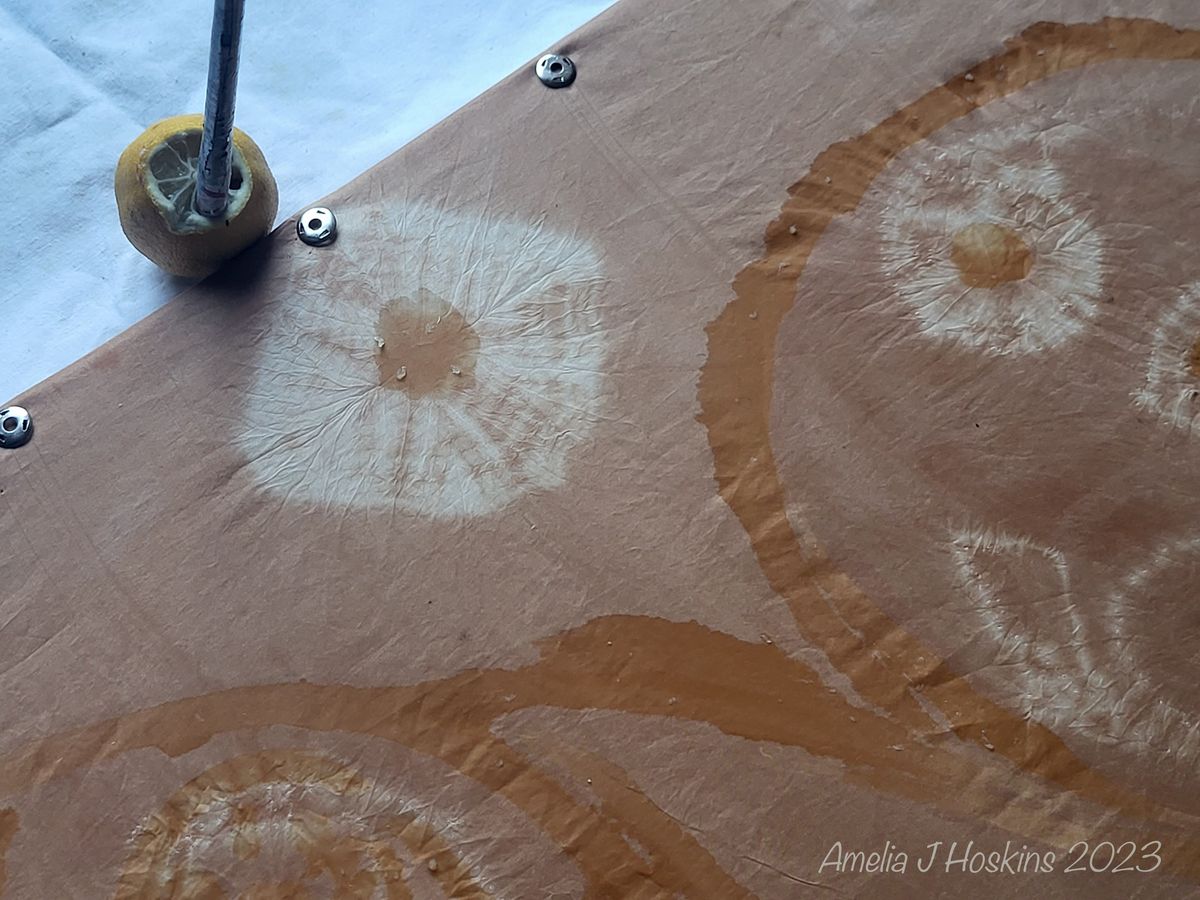
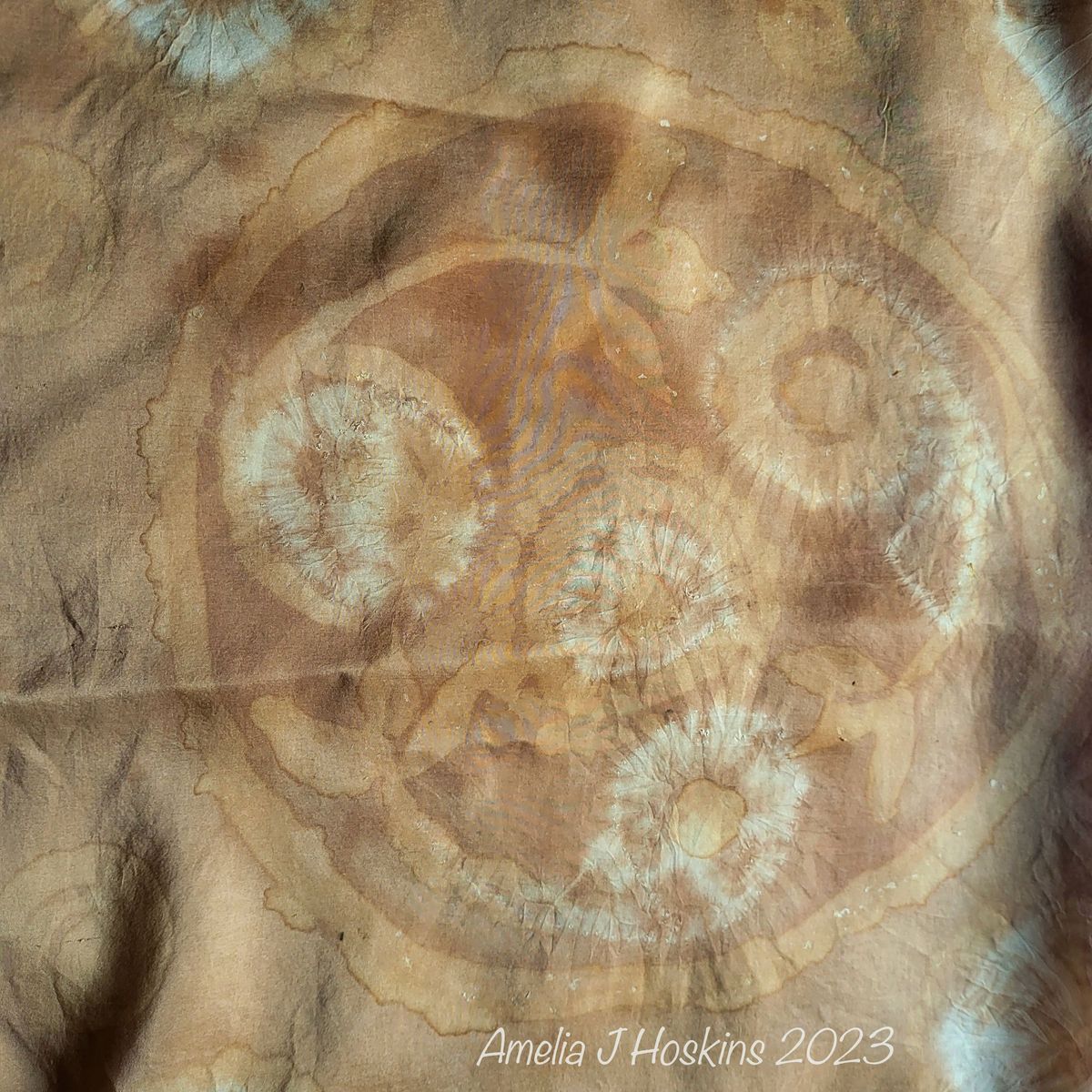
Lemon juice bleaching result.
Several tones lighter, but not enough.
Useful as a test. Could be used as a created texture in backgrounds.
Last bleaching - with professional chemical discharge paste, mixed 50/30% water/paste.
A much lighter result and clearer outlines.
Pasted on with stiffish brush, the outlines are clear, giving a good base for adding coloured details to the design.
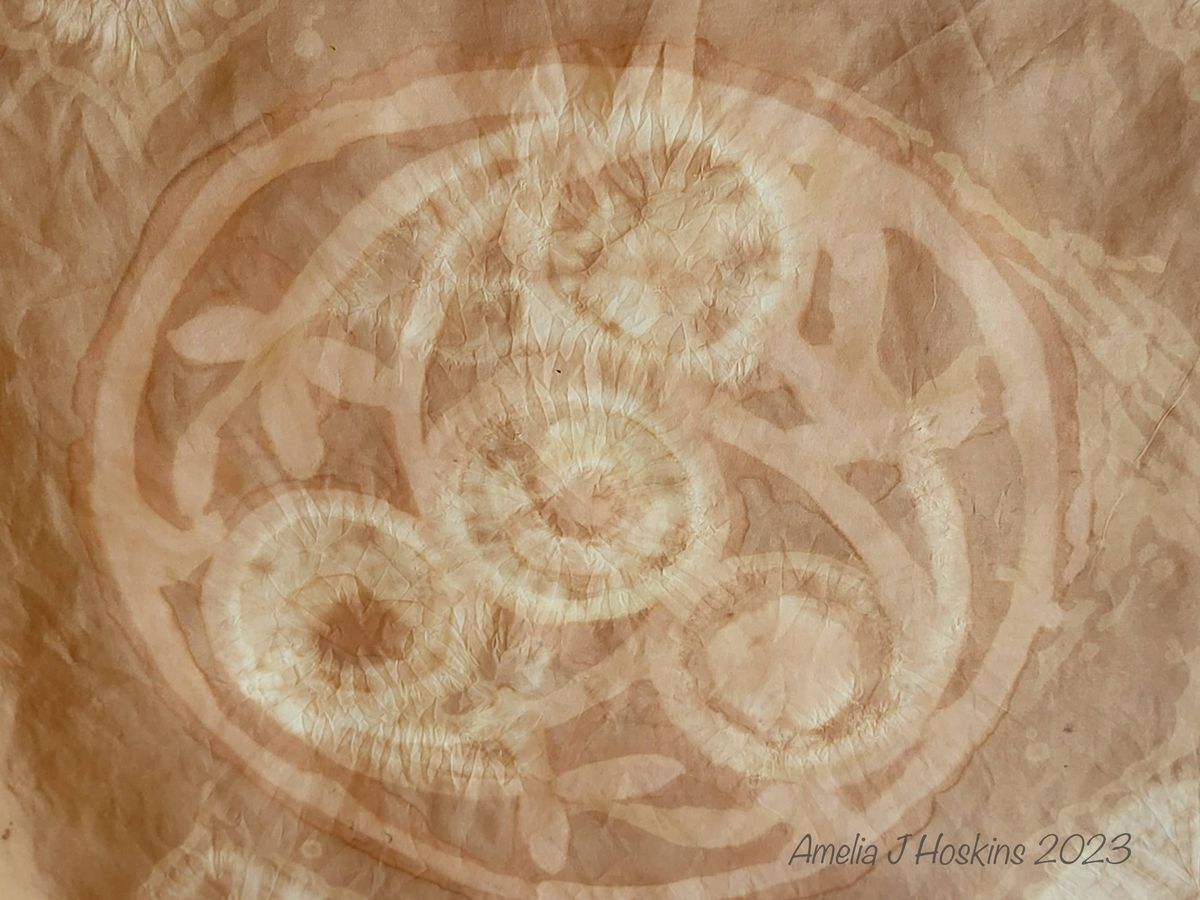
Silk design will be used as a centrepiece in patchwork quilt, (pinned here to cotton background). New added details of silk painting will echo the colours in the patchwork prints. Quilt design development will be linked to as a new post.
